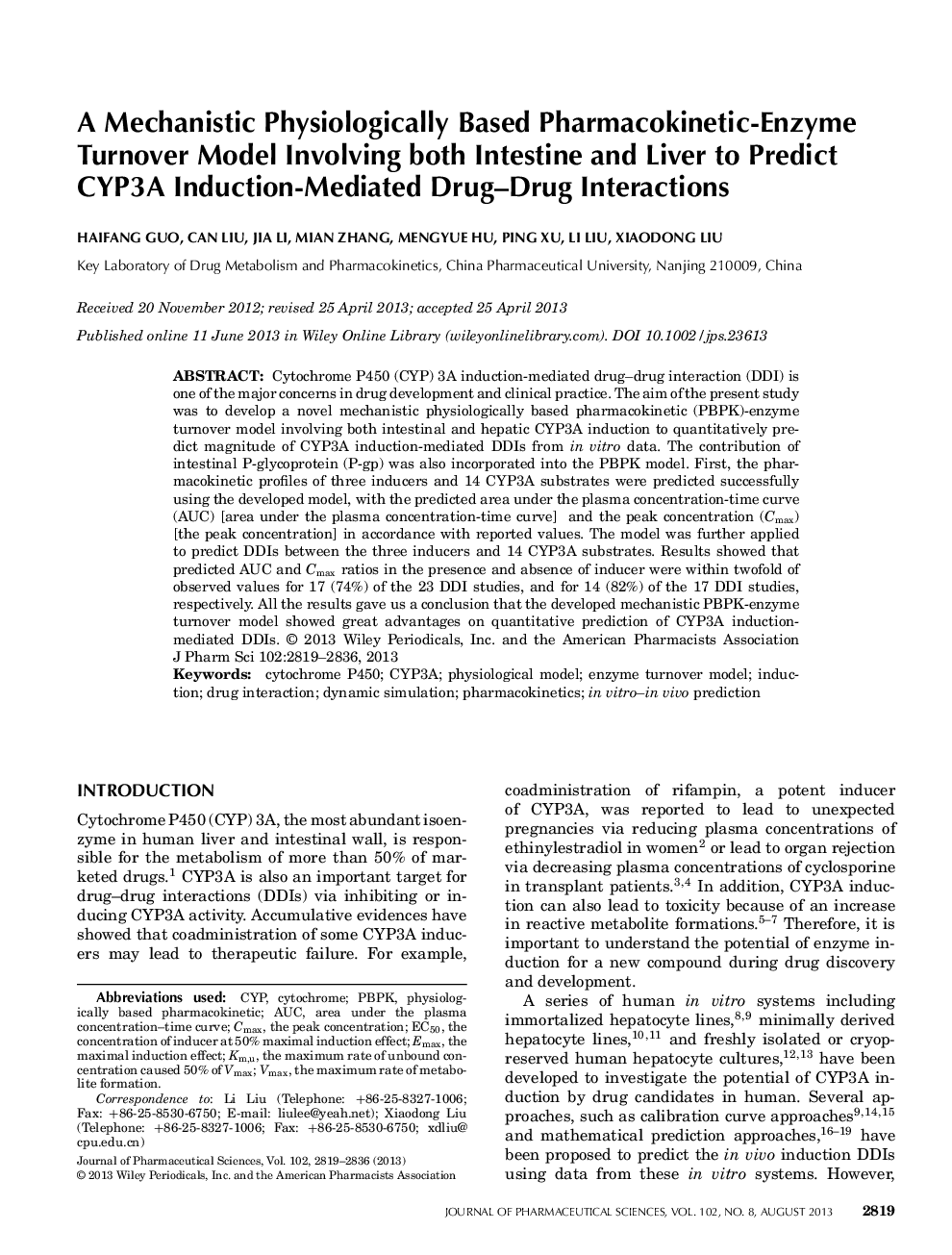| Article ID | Journal | Published Year | Pages | File Type |
|---|---|---|---|---|
| 10162713 | Journal of Pharmaceutical Sciences | 2013 | 18 Pages |
Abstract
Cytochrome P450 (CYP) 3A induction-mediated drug-drug interaction (DDI) is one of the major concerns in drug development and clinical practice. The aim of the present study was to develop a novel mechanistic physiologically based pharmacokinetic (PBPK)-enzyme turnover model involving both intestinal and hepatic CYP3A induction to quantitatively predict magnitude of CYP3A induction-mediated DDIs from in vitro data. The contribution of intestinal P-glycoprotein (P-gp) was also incorporated into the PBPK model. First, the pharmacokinetic profiles of three inducers and 14 CYP3A substrates were predicted successfully using the developed model, with the predicted area under the plasma concentration-time curve (AUC) [area under the plasma concentration-time curve] and the peak concentration (Cmax) [the peak concentration] in accordance with reported values. The model was further applied to predict DDIs between the three inducers and 14 CYP3A substrates. Results showed that predicted AUC and Cmax ratios in the presence and absence of inducer were within twofold of observed values for 17 (74%) of the 23 DDI studies, and for 14 (82%) of the 17 DDI studies, respectively. All the results gave us a conclusion that the developed mechanistic PBPK-enzyme turnover model showed great advantages on quantitative prediction of CYP3A induction-mediated DDIs. © 2013 Wiley Periodicals, Inc. and the American Pharmacists Association J Pharm Sci 102:2819-2836, 2013
Keywords
Related Topics
Health Sciences
Pharmacology, Toxicology and Pharmaceutical Science
Drug Discovery
Authors
Haifang Guo, Can Liu, Jia Li, Mian Zhang, Mengyue Hu, Ping Xu, Li Liu, Xiaodong Liu,
